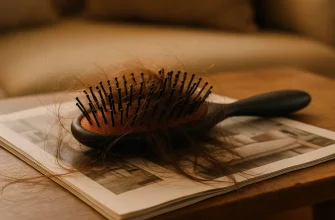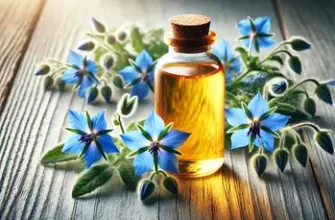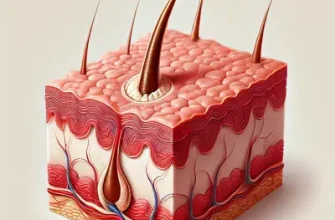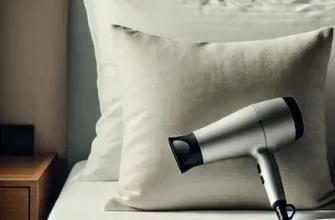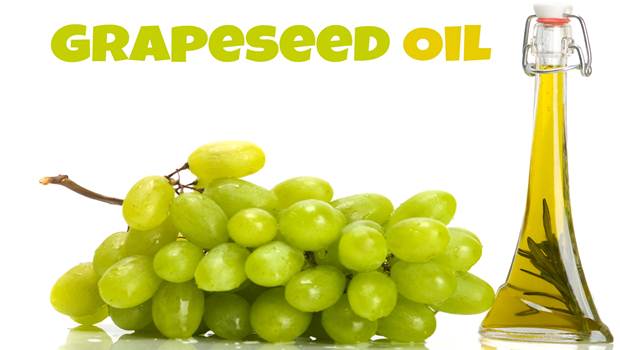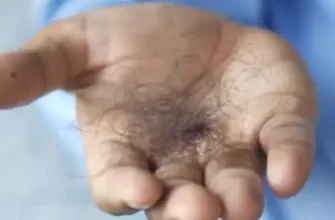Olive oil has long been a staple in Mediterranean kitchens, but over the last decade, it’s become a household name in the world of beauty too. But does it really live up to the hype when it comes to hair growth?
The short answer: Maybe — but not in the way you might think.
Olive Oil & Hair: 6 Things You Didn’t Know
Contains Oleuropein
Supports IGF-1, which is linked to hair follicle stimulation and healthier scalp function.
Non-comedogenic Score ~2
Less likely to clog pores than coconut oil — better for sensitive or mixed scalp types.
Mild Natural SPF
Offers a natural sun protection factor of ~7, shielding scalp from UV damage.
Balances Sebum Production
May help regulate oiliness for scalps prone to overproduction of sebum.
Enhances Ingredient Penetration
Acts as a carrier oil, increasing the absorption of essential oils and nutrients.
Not Ideal for Thin Hair Daily
Can weigh down fine strands if used too frequently. Weekly use is enough.
Source: iytmed.com
Olive oil is rich in healthy fats, vitamin E, and antioxidants. These nutrients are known to support scalp health, reduce inflammation, and potentially stimulate hair follicles. However, there’s no silver bullet — applying olive oil won’t make your hair grow overnight. What it can do is improve the environment for hair growth, which is a solid win in our book.
According to a 2022 study published in the Journal of Cosmetic Dermatology⧉, oleuropein — a compound found in olive leaves and oil — stimulated hair growth in mice by upregulating IGF-1, a protein that promotes follicle development.
So, while it’s not an instant fix, olive oil may be a solid team player in your hair care routine.
What Makes Olive Oil Beneficial for Hair?
Olive oil contains monounsaturated fats, squalene, and antioxidants — all crucial for maintaining a healthy scalp. When massaged into the scalp, it can:
- Moisturize the skin and reduce dandruff: Olive oil penetrates the outer layer of the scalp, helping to retain moisture and soften dry, flaky patches. This makes it especially beneficial in dry climates or colder seasons. Compared to other natural moisturizers like coconut oil, olive oil is less comedogenic, meaning it’s less likely to clog pores — a useful trait for those with combination scalp types.
- Improve blood circulation: The act of massaging olive oil into the scalp not only delivers nutrients but also stimulates blood vessels just below the skin. This promotes microcirculation, helping nourish hair follicles. While the effect is mild compared to professional treatments like microneedling, it’s a safe and sustainable habit that adds cumulative benefit over time.
- Reduce oxidative stress on hair follicles: Antioxidants in olive oil — particularly vitamin E and polyphenols — help neutralize free radicals that damage skin and hair cells. This protective effect may slow the weakening of hair strands and reduce premature shedding. Studies comparing olive oil to commercial serums show that while results may not be as rapid, olive oil performs steadily over weeks of use with fewer irritants involved.
One tablespoon (about 14 grams or 0.5 oz) of extra virgin olive oil provides around 2 mg of vitamin E — that’s about 13% of the daily recommended intake. Vitamin E is known to enhance blood flow and prevent oxidative damage, both of which are important for hair vitality.
Interestingly, olive oil also helps prevent breakage by forming a protective layer over the hair shaft, especially for those using heat styling tools frequently. And that’s a real hair-saver (literally).
How to Use Olive Oil for Hair Growth at Home
There’s no one-size-fits-all approach, but here’s a go-to method recommended by dermatologists — now with a bit more detail to help you do it right:
- Choose extra virgin olive oil — cold-pressed and unrefined for the highest nutrient content. Look for labels like “100% extra virgin,” and ideally, choose oils in dark glass bottles to protect antioxidants from light degradation. Avoid clear plastic bottles or blends labeled as “light olive oil,” as these often lack the active compounds your scalp needs.
- Warm 2–3 tablespoons (30–45 ml) gently — to around 100°F (38°C) for better absorption. Don’t overheat it — lukewarm is enough. If you’re planning regular use (say, twice weekly for a month), stock up with about 250–300 ml per month. That way, you’re not running low mid-routine.
- Massage into scalp for 5–10 minutes — fingertips only, no nails! The sensation should be soothing and warm, not scratchy or tingly. You’re aiming to stimulate circulation without damaging the skin barrier. If your scalp feels irritated or tender afterward, reduce pressure or duration next time.
- Wrap hair in a warm towel — and leave for 30 minutes to 1 hour. The heat opens hair cuticles and pores slightly, helping nutrients penetrate better. If you’re short on time, even 20 minutes can offer benefits, though the longer exposure is ideal once a week.
- Shampoo twice — to fully remove the oil. One wash might leave residue that attracts dust or causes limp hair. Use a gentle, sulfate-free shampoo, and if needed, add a little baking soda to your first wash to break down excess oil more efficiently.
Use this treatment 1–2 times per week. Overdoing it might clog pores or weigh down your strands — and remember, more isn’t always better when it comes to scalp oils.
Reyus Mammadli, a medical consultant, recommends pairing olive oil with essential oils like rosemary or peppermint to enhance stimulation. “The synergy between olive oil’s base nutrients and the active compounds in essential oils can optimize scalp health,” he notes.
Real People, Real Results: Hair Growth Stories from the U.S.
Case #1: A 36-year-old woman from Phoenix, AZ, experienced postpartum hair thinning. She started applying warm olive oil twice a week, coupled with scalp massages. Within 3 months, she noticed a visible improvement in texture and density.
Case #2: A 52-year-old man from Charlotte, NC, with early signs of male pattern baldness, reported thicker regrowth around his crown area after using a blend of olive oil and rosemary oil three times weekly for 4 months. No drastic turnaround, but he said he was “pleasantly surprised.”
These aren’t isolated cases — consumer forums and dermatology clinics report similar feedback across various demographics.
Scalp Health Scorecard: Is Olive Oil Right for You?
Dry Scalp?
✅ Olive oil helps lock in moisture and soothe flaking skin.
Use Heat Tools Often?
✅ Olive oil forms a barrier to protect against heat-induced breakage.
Fine or Oily Hair?
⚠️ Use with caution — apply lightly and wash thoroughly to avoid greasiness.
Sensitive Skin?
❓ Always do a patch test before use to rule out irritation or allergies.
Need Budget-Friendly Care?
✅ Olive oil is accessible, affordable, and multitasking for beauty routines.
Looking for Fast Results?
❌ Olive oil works gradually — patience is key for long-term effects.
Source: iytmed.com
Side Effects and What to Watch Out For
Generally, olive oil is safe — but not entirely risk-free. Let’s break down the key concerns in detail so you can make an informed choice.
- Greasy buildup: Olive oil is occlusive, meaning it locks in moisture but can also trap dirt and sweat. When used too frequently or not washed out properly, it can clog pores on the scalp. This might lead to folliculitis — an inflammatory condition where hair follicles become infected, often resulting in painful bumps or pustules. While mild cases resolve with basic hygiene, more severe instances might require topical antibiotics. If you notice itching, redness, or tiny pimples along your hairline, give the oil a break for a week or two.
- Allergies: Though rare, allergic reactions to olive oil can occur. Symptoms may include itching, redness, or rash on the scalp. In some sensitive individuals, this may even trigger contact dermatitis. A patch test — applying a small amount behind your ear or on the inner wrist and waiting 24 hours — is a smart move before using it broadly. If irritation arises, olive oil may not be your best bet.
- Product purity: Here’s where it gets tricky. Many store-bought “olive oils” are actually diluted blends with cheaper, lower-quality oils like soybean or palm. These impure versions lack the antioxidant content that makes olive oil beneficial in the first place — and some can even irritate your scalp. Look for bottles labeled “certified organic” or “100% extra virgin,” ideally in dark glass packaging to prevent light degradation.
Reyus Mammadli notes, “For most people, occasional topical use of high-quality olive oil poses little risk. But for those with sensitive or acne-prone scalps, overuse can lead to discomfort or even setbacks in their hair journey.”
How Olive Oil Compares to Other Natural Oils
Moisture Retention
Olive: Moderate | Coconut: High | Argan: Low
Antioxidant Content
Olive oil leads due to vitamin E and polyphenols.
Absorption Rate
Olive: Medium-slow | Jojoba: Fast | Castor: Slow
Comedogenic Rating
Olive: ~2 | Coconut: ~4 | Jojoba: ~1 — lower is better for pores.
UV Protection
Olive oil offers mild SPF (~7), while most others offer none.
Best for Hair Types
Olive: normal to dry | Coconut: thick/coarse | Jojoba: oily scalps
Source: iytmed.com
Reyus Mammadli cautions against using olive oil daily: “You want nourishment, not suffocation. Think of it as a vitamin boost — not your main meal.”
Editorial Advice
Olive oil isn’t a miracle cure, but it’s a well-supported, practical choice backed by nutrition science. It offers a nutrient-rich, cost-effective way to support your scalp and hair health — especially when combined with modern therapies.
For best results, think of olive oil as part of a holistic routine. Eat well, stay hydrated, avoid harsh chemicals, and consider seeing a dermatologist if you’re seeing more hair in your brush than usual.
And if you’re going to give olive oil a try, make it extra virgin — because your scalp deserves the good stuff.

